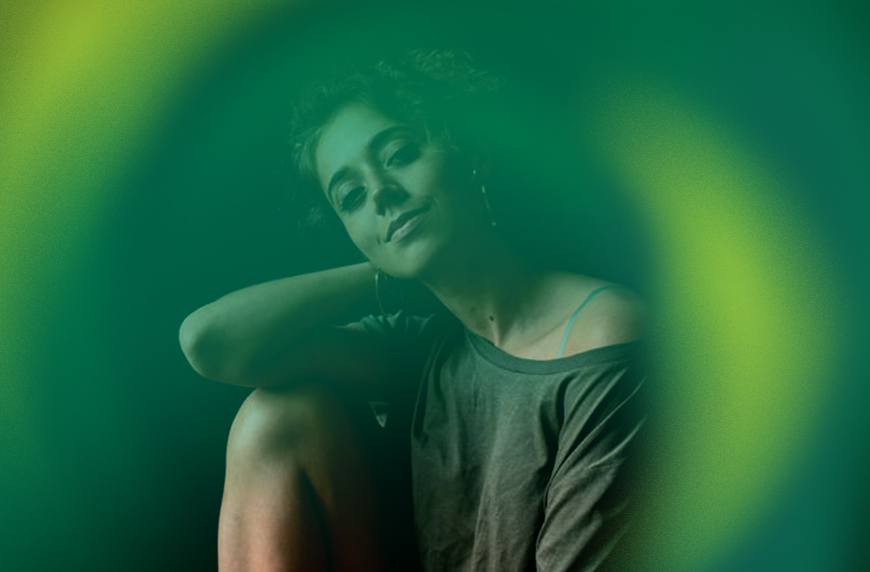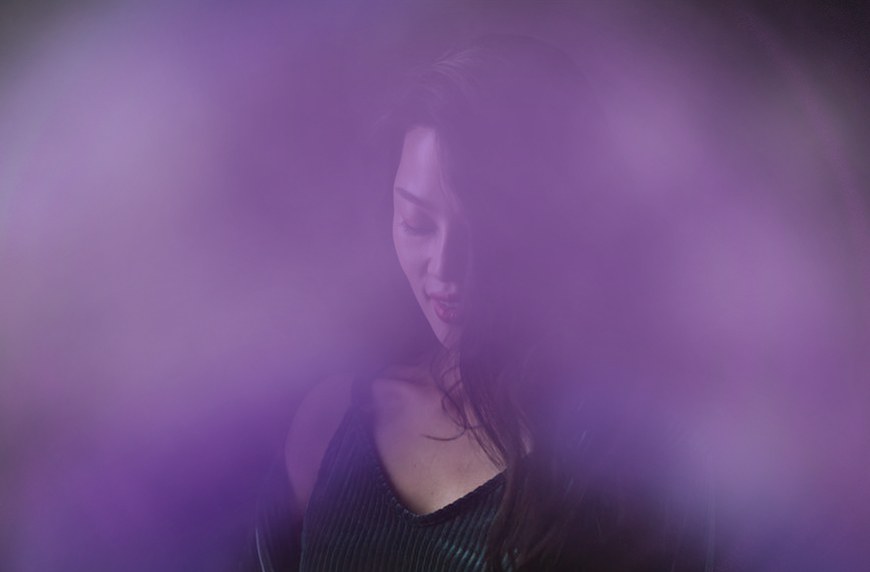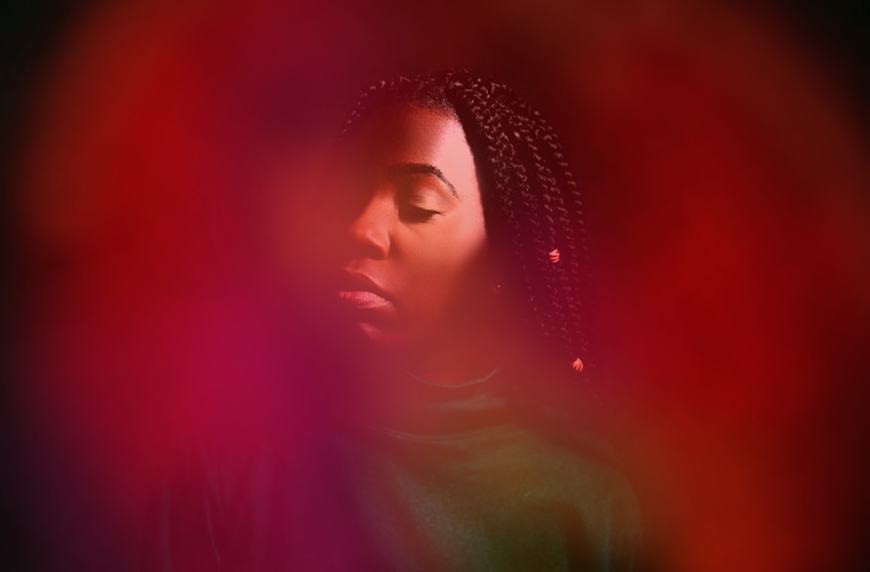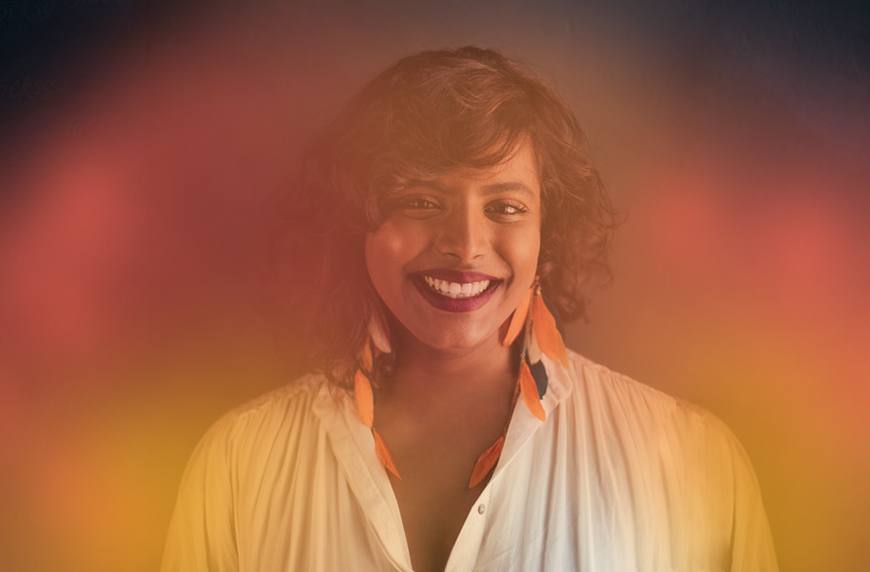Ever Wondered How To Read Auras? Here’s Everything You Need To Know About Learning and Interpreting Your Aura Colors
- Deborah Hanekamp, seeress, energy healer, and founder of Mama Medicine
- Megan Michaela Firester, aura reader, psychic medium, host of Know Your Aura, and author of What’s My Aura?
There’s also red in my aura, she says—but that’s not supposed to be there. That means I’ve been letting logic guide me rather than intuition, both in life and in my business, which is not my authentic way of being. (How did she know?)
Suffice it to say, my first aura-reading experience was pretty spot on. Curious to learn more about all things auras (like what an aura really is, and what the colors signify), I called upon Firester, as well as Mama Medicine founder Deborah Hanekamp, who reads auras as part of her healing offerings, to clear things up. Color me intrigued.
{{post.sponsorText}}
What actually is an aura?
The term "aura" is often thrown around haphazardly. But what does it actually mean? "An aura is the life force energy field around you," Firester says. “I see it in color. We all have our own inherent combination. It’s like a snowflake."
“An aura is the life force energy field around you.” —Megan Michaela Firester, aura reader
Hanekamp adds that an aura is "the energy that we radiate" and encapsulates the unique energetic counterpart to our physical body. This explains why you may be able to pick up on a person’s vibe just by being in the same room as they are, or you might be able to feel when someone is staring at you from the back or side, even if you can't see them. "Their energy is being sent to your energy, so you feel it," says Hanekamp.
According to Firester, your aura is directly correlated to "your energetic health and wellbeing," so "interpreting your aura is a means through which you can explore your energy in its present state." Much like reading the weather forecast, reading an aura offers an energy forecast based on the meanings of the different aura colors present (more on that below).
To be sure, no aura color is better or worse than another, says Firester; different aura colors just reflect different strengths in the people who have them, meaning they'll need to focus on different things to find fulfillment in life. "Many of us can have a hard time deciphering our own wants, needs, and direction," says Firester. "Auras don’t just show us who we authentically are, but what energies we may require to feel more comfortable in our life."
On a spiritual level, your aura can inform all areas of your life and personality, from what types of jobs you enjoy to how you prefer to exercise to the ways in which you best communicate with others. In turn, learning about your aura can help you understand yourself better, says Firester. And if you understand yourself better, you can also "lead yourself down a path that feels more authentic to you," she says.
Think of your aura as a tool in your spiritual tool belt, right alongside Human Design or astrology. By seeing its hues, learning their meaning, and keeping it cleansed, you can better show your, well, true colors.
What do auras look like?
While some say auras have seven different layers or levels, neither Firester nor Hanekemp sees them that way. Instead, they see auras as splotches of colors around people, much like the images of rainbow-hued aura portraits. And they both note that different aura readers may also see different colors in the same person's aura.
For example, while Firester saw predominantly purple and blue in my aura, Hanekamp picked up on lots of bright yellow and green. Both of their interpretations rang true for me, but pointed to different facets of my personality—meaning, the readings were different, but felt equally accurate.
How do I know my aura color?
It's possible to learn your aura color(s) on your own; some can spot it by staring into the mirror and observing what color(s) seem to emanate around their head. You can also try staring at your hands and seeing if a color eventually reveals itself.
If you don't have the sight for that (spiritually or in a my-glasses-prescription-is-out-of-date way), you could also go to an aura reader and have them spot your energy. A reading is the best way to learn your aura colors, but Firester says you can also take an aura color quiz to get an idea from home.
If you go the quiz route, it's important to answer the questions with as much integrity and honesty as possible. "When wanting to understand what your true aura color is, the journey you take inward is the most noteworthy thing—so, taking the time to know yourself beyond what you’ve been told you are, programmed to be, or forced to do in life is the essential task," says Firester.
What do the different aura colors mean?
Yellow

“The vibe for yellow is inquisitive, busy, and curious,” Firester says. “You always see a little to-do list in their head. They’re very scheduled.” Yellow people also love immersing themselves in practical forms of art, such as baking, interior design, and sewing. These folks are often therapists, directors, and accountants. And when it comes to working out, they love things with clear structure and form like yoga and Pilates.
Green

For Hanekemp, green in an aura means “compassion, natural healing energy, a deep connection to the Earth, and a lot of divine feminine wisdom.”
Firester sees a green aura as reflecting intelligent visionaries who are very innovative and driven by logic. “They exist in their own reality,” she says. Greens are known to be lone wolves who love being outside doing solo activities like hiking.
Purple

Purples are creative, artistic, emotional, and intuitive. “Spiritual evolution is big for them,” Firester says. “They have an 'It' factor.” This helps explain why many artists, like Prince and Lady Gaga, have big purple auras.
When it comes to fitness, the activities at hand have to be fun for purples (think: dance cardio and Zumba). Career-wise, you often find purples working as teachers, therapists, and writers.
Red

“Red is focused more on the material realm,” Hanekemp says. “They aren't just thinking about things but are actually doing them.”
Firester sees reds in a similar way, noting that they’re “strong and assertive natural leaders who need to be charge.” They love risk and are motivated by their desire to win, which explains why many pro athletes and entrepreneurs have red auras. They can also be quite intense, so cardio-heavy workouts, CrossFit, and cycling are their jam.
Blue

Blue auras are the total opposite of reds; they have a compassionate vibe but don’t like being in the spotlight. Blues are the selfless healers of the world—think nurses, teachers, and caregivers, Firester says, emphasizing that they tend to be empaths who absorb and feel other people’s emotions as their own. And they’re not huge fans of working out, so doing low-impact things, like walking (which does count as exercise, BTW) is best for them.
Peachy, sunset colors

"Peach, oranges, pinks—that has a lot to do with creativity," says Hanekemp of sunset-esque auras. "They [also] have a focus on relationships, togetherness, and having fun. Their family is everything. Their friends are everything."
What is a rare aura color?
Different aura readers can see varied spectrums of colors, so some may see more than the above base aura colors. Rare aura colors are simply aura colors less commonly spotted in readings, says Firester.
For a couple examples, crystal or rainbow auras are associated with "an otherworldly connection to a person's higher self," while turquoise, pink, and orange are much more common in children than adults, says Firester. These are playful and imaginative aura colors, which are associated with behaviors that we're often required to tamp down as we age, in order to comply with societal expectations and standards.
If you have one of these rare aura colors as an adult, Firester says that points to a high level of time and energy spent protecting your inner child. "Seeing a rare aura color on an adult is an indication that they have been able to push through circumstances and programming to live life as their authentic selves, regardless of what societal opinions may be," she says.
Can you have multiple aura colors?
According to Firester, it's actually uncommon to have just one aura color, and most people have two or three. This spectrum of colors reflects the various parts of your personality and soul. "The energies you embody and which exist around you are like filters upon the world, with the colors representing the different perspectives through which you tend to view things," says Firester.
Knowing all of your aura colors can help you achieve balance in life and broaden your horizons. "Combinations of various aura colors create a multitude of perspective and meaning," says Firester. "It's important to understand the many layers of ourselves so as to utilize all that we are in this life."
For example, let's say your aura is both yellow and purple, which means you have a natural inclination for both organization and creativity. If you lean too hard on your purple side without also honoring your yellow side's need for structure, you may find yourself feeling off-kilter. "It's necessary to balance the energies so as to feel calm, peaceful, and fulfilled," says Firester.
It's also possible to "wear" an inauthentic aura color in addition to the colors that are true to you, adds Firester—kind of like the red that showed up in my aura reading. This can happen due to programming or environmental issues like being in the wrong job or a tough relationship.
Hanekemp adds that whatever you’re experiencing emotionally or physically can also influence the way your aura looks on a day-to-day basis. “If somebody is in pain, their aura is going to look completely different to me than on a day when they aren’t in pain,” she says. She can even tell when someone is hungover because their aura appears weak and dull. Alternatively, someone who is feeling confident and comfortable likely will have a strong, bright aura.
What are aura soul colors?
Despite how your day is going or what mood you're in, your aura soul colors—the true colors of your aura—don't change. However, we all have activities we have to do to get through the day that may not completely align with who we are, says Firester; these actions can affect your aura colors (as noted above) but not your aura soul colors.
"Wearing aura colors which are not your soul colors, or changing your aura to fit a particular circumstance can feel draining and numbing," says Firester. "It can make life feel like just a series of things you have to check off a to-do list." She suggests really getting to know yourself and your aura soul colors, so you can better make life choices that align with those colors, and live authentically.
How to cleanse your aura
“Your aura field can pick up some funky things from other people,” Firester says, “so, cleansing your aura is an important ritual.” To do this, she recommends setting the intention to remove anything toxic for your aura, and taking an Epsom salt bath.
Crystals also hold aura-cleansing powers: You can program your favorite crystal with an intention, and hold it whenever you’re feeling a little off. "Imagine it cleaning your energy field and removing anything that's not 'you',” Firester says. One crystal that's particularly great for cleansing is selenite. "It’s a salt, and salt is very powerful for neutralizing energy," Hanekamp says.
Salt baths and crystals aside, another way to cleanse your aura, Hanekamp says, is to "stand outside with bare feet on the ground." Connecting with nature can help your body and energy return to its natural state.
Why am I suddenly seeing auras?
If you feel particularly attuned to auras, Firester says this means your third eye—the invisible force located between your eyebrows and associated with clarity—is opening. You may be tapping into your inner creativity or sense of knowing.
This is more common in children, who can often more effortlessly see auras because they regularly channel their third eye with their play and imagination; adults, who are typically less likely to embrace imagination, are also less likely to use their third eye and tend to trust their physical eyes only as they age.
If you notice yourself seeing auras, Firester highly recommends "leaning into it, creating wonder around it, and trusting what you see." She compares opening the third eye to strengthening a muscle. It'll get stronger the more you use it, she says.
To "nudge that third eye into action," be inquisitive. She recommends asking yourself, "What color does this person remind me of?" when you're out in the world and people-watching, or spending time with loved ones.
What to expect during an aura reading
During an aura reading, you can expect to learn exactly what your aura colors are and what they mean. When Firester reads auras, she says the first thing she does is describe the textures and layers of the colors she sees. "No two auras are alike, and your aura is a unique creation in this universe," she says. "During an aura reading, I am able to see what your underlying motivations are in this world [through the different colors] and communicate them to you."
"No two auras are alike, and your aura is a unique creation in this universe."—Firester
Another facet of an aura reading typically involves getting insight into how best to channel all your aura colors in order to live your life in the way that's most aligned. Firester says she shares practical tips for how to do this during her readings. "Understanding your true wants, desires, and needs allows you to live authentically," she says.
Can you get a picture of your aura?
Aura photographs are another way to decipher your aura. These involve a specialized camera that's thought to capture the electromagnetic field around you. Your picture is taken in a dark room, and the photo showcases the colors radiating off of you.
To get the most out of an aura photography session, it's important to be in as calm and natural a state as possible before your portrait is taken, says Firester. She recommends prioritizing getting enough sleep and staying hydrated before the session. You also want to make sure you're in good health—so don't plan to have your aura photo taken if you're feeling under the weather. "Your physical body and spiritual body are very connected, so the more you take care of your physical self before an aura photograph, the better and more authentic that aura will show up on camera," she says.
Beyond that, it's also a great idea to clear your energy beforehand to make way for your true colors to shine through. "Taking a few moments to center yourself, meditate, and feel connected to the moment will allow you to get a clearer picture of your aura," she says. If you need to ground yourself while your photo is being taken, Firester recommends closing your eyes, taking a deep breath, and centering your focus on your third eye (the space between your eyebrows). This way, you'll be in the right space to tap into your true colors—and to see them displayed in your photo.
Loading More Posts...